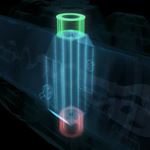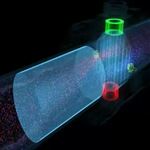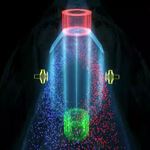The electromagnetic flowmeter is based on the principle of electromagnetic induction to measure the flow rate of conductive media. The physical principle of this measurement method can be traced back to 1831. The British physicist Michael Faraday discovered that a magnetic field can generate current. About 100 years later, the Swiss inventor Bonaventura Thurlemann applied this principle to the measurement of conductive liquids and built the world's first electromagnetic flowmeter.
 | Each electromagnetic flowmeter is equipped with two excitation coils. With the help of so-called pole shoes, these coils will generate a constant magnetic field across the cross section of the measuring tube. |
 | Two electrodes for measuring induced voltage are installed inside the tube wall at a certain angle, and the lining installed inside the measuring tube prevents a short circuit between the conductive liquid and the metal tube. |
 | At first when the liquid is not flowing, no induced voltage will be measured between the two electrodes, and the charged particles in the conductive liquid are evenly distributed, which are represented by red and blue particles respectively |
 | However, as soon as the liquid starts to flow in the measuring tube, the magnetic field will exert a force on the charged particles. As a result, the positive and negative charged particles in the liquid are separated and concentrated on both sides of the tube wall. |
 | At this time, the two electrodes will detect the voltage waveform and measure it. The voltage is proportional to the flow rate of the fluid in the pipe. Together with the known cross-sectional area of the pipe, the actual volume flow can be calculated. The greater the flow rate, the greater the separation of charged particles, and thus the greater the voltage measured between the electrodes. |
 | In practical applications, while the electrode measures the real voltage, it also measures the interference voltage. The interference voltage must be separated. The most successful way to separate the interference voltage is to use DC pulses to generate a magnetic field, so that the polarity of the magnetic field is alternately interchanged, so that the voltage obtained on the measuring electrode will continuously change its polarity. In this way, all constant interference voltages can be eliminated. For example, the electrochemical influence in the liquid, or the electromagnetic influence of the external magnetic field. In this way, the magnitude of such interference voltage will not have any influence on the actual detection signal, and its advantage is stable measurement and stable system zero. |